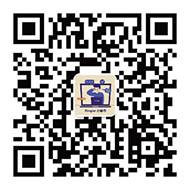Controlling the moisture content in dry good ingredients can impact product quality, formulation, processing, shelf life and even shipping costs. The baking process in food production is chemistry, requiring precision at every step. Therefore, accurate measurement of moisture content is essential throughout the process and even with the final product. The key to achieving this precision is having the correct tools.
However, when deciding on the best moisture measurement technology for food processing, it is important to avoid choosing solely based on the initial purchase price of the instrument. Weighing the benefits of owning and using a moisture meter and understanding how it can impact both efficiency and profit is key to making a successful long-term acquisition.
Importance of correct measurements
Using an accurate moisture meter ensures that ingredients are stored at the correct moisture level, which benefits the baking process at every step.
In applications like preparing mixes or creating a large mixture, having the correct measurements is vital for success. Using flour with too much or too little moisture affects the weight of the flour, and using an incorrect amount of flour can result in a finished product that is too moist or too dry.
In an experiment, flour lost 8% of its weight with only a slight increase in heat and lack of humidity. Because of this weight loss, it can be easy to use too much or too little flour, which can significantly affect the consistency.
Establishing the moisture level of dry ingredients that must be mixed together is also very important, as it can affect how the ingredients blend, dissolve, or flow through the process. The moisture level of dough can alter baking time.
Incorrect moisture content in ingredients can affect the taste, texture, and appearance of products.
Moisture content plays a decisive role in determining shelf life, even when products are stored in containers that appear airtight. Any extra moisture in the mix can cause clumping. If there is too much moisture, mold can develop, or the product can spoil in the package. Too little moisture and the product can become stale faster.
Moisture content can also affect the texture, taste, appearance, stability, and safety of the final product. Insufficient moisture can throw off baking times and leave the finished product brittle and chalky instead of soft, moist, and flavorful. Too much moisture can also cause the packing to curl and the baking mixes to clump, making the product dangerous and resulting in mold and foodborne illness.
Finally, since baked goods are typically sold by weight, packaging and shipping the product at optimum moisture percentages can also help optimize the purchase price and freight cost.

Using an NIR moisture meter throughout the baking and packaging process will provide a tastier, more consistent product
Traditional testing versus NIR moisture meters
One traditional testing method is Loss on Drying (LOD), which measures the total material weight change after drying. However, such tests typically require a sample to be prepared and brought to a lab. The test also takes at least 15 minutes to several hours to perform, which is too slow when more immediate measurements are necessary. It also requires the sample to be altered or destroyed, wasting ingredients. In addition to taking a great deal of time, this process can be inaccurate.
In contrast, advanced moisture meters that utilize Near-Infrared (NIR) light, a highly accurate non-contact secondary measurement method, can deliver immediate laboratory quality moisture readings.
A NIR moisture meter requires little-to-no calibration, and provides instant, non-destructive readings, which means production can begin almost immediately. Because no direct contact or sample alteration is required, unusual textures and particle size variation are not an issue. This can be important when used with a range of ingredients in different settings.
Understanding the basics of how NIR technology works, and for which uses it is best suited, can help commercial bakeries appreciate how it can save them money and improve their bottom line.
NIR measurement uses reflectance and absorbance principles to calculate the moisture content of an item. The meter bounces a beam of light off the product and in some cases transmits the light through the sample. The light is filtered to wavelengths that excite the moisture molecules. The higher the moisture content, the higher the amount of light absorbed. The instrument measures the light reflected, and the result is automatically converted into a moisture content reading.
“NIR moisture meters allow very accurate instant measurement of solids, pastes, and liquids without contact or sample preparation, so there is no contamination in handheld and online models,” says John Bogart, Managing Director of Kett US, a manufacturer of a full range of moisture and organic composition analyzers. “Once the meter has been calibrated against the lab or production standard, the calibration is stored in the device, so no calibration is required in the field. Measurements are fully traceable to the original measurement method.”
The versatility of this technology means food processors can achieve accurate moisture measurements when needed, whether on the process line, in the lab, or in the field.
NIR meters are available in inline and online models that provide continuous moisture measurements while mixing, blending, and drying. By conducting more tests at a higher frequency, production managers can achieve tighter control of their product quality.
Kett now also offers handheld devices that allow even less-skilled personnel to take lab-quality moisture measurements. These “point-and-measure” options allow readings to be quickly taken at any stage of the process including at the supplier, in receiving areas, in-process (prior and post-mixing) and on the finished product.

The Kett KJT130 analyzer. The user simply points the instrument at the ingredient, and the moisture content is instantly shown on a digital display, with results accurate to .01% in a 0-100% measurement range.
One example is Kett’s KJT130 Handheld Portable Instant Moisture Meter. The user simply points the instrument at the ingredient, and the moisture content is instantly shown on a digital display, with results accurate to .01% in a 0-100% measurement range. The unit is designed for frequent spot checks on both stationary and moving (process line) products. Moisture measurement data can be stored in the instrument, downloaded continuously, or manually recorded.
Advanced technology utilizing NIR measurement offers significant benefits. Whether deployed inline, online, or through handheld devices for routine spot checks and batch verification, NIR moisture meters offer a combination of speed, precision, flexibility, and user-friendly operation. By adopting these tools, commercial bakeries can dramatically improve production efficiency, product quality, and overall profitability.














